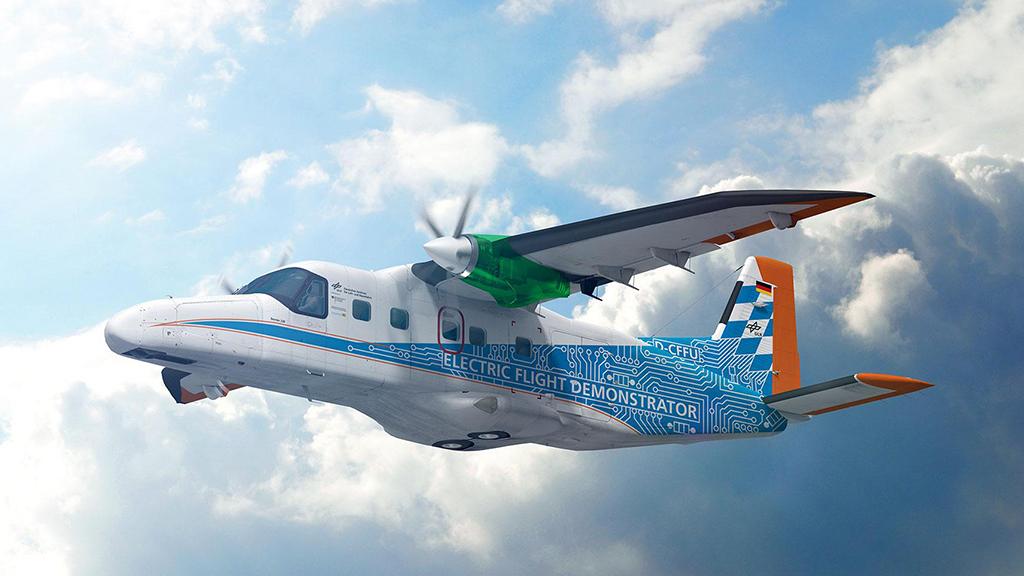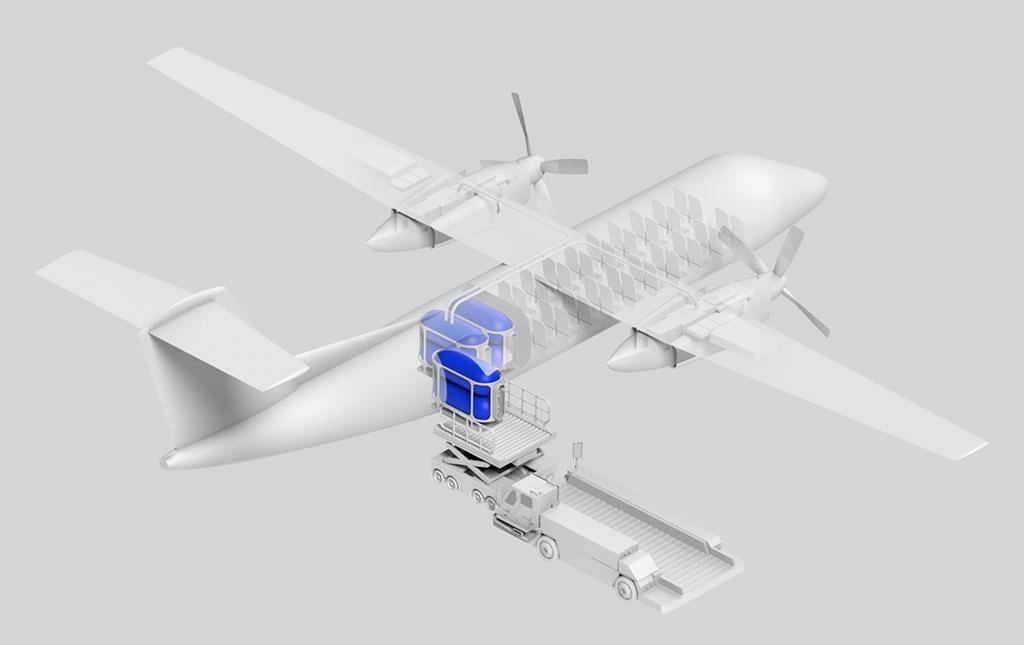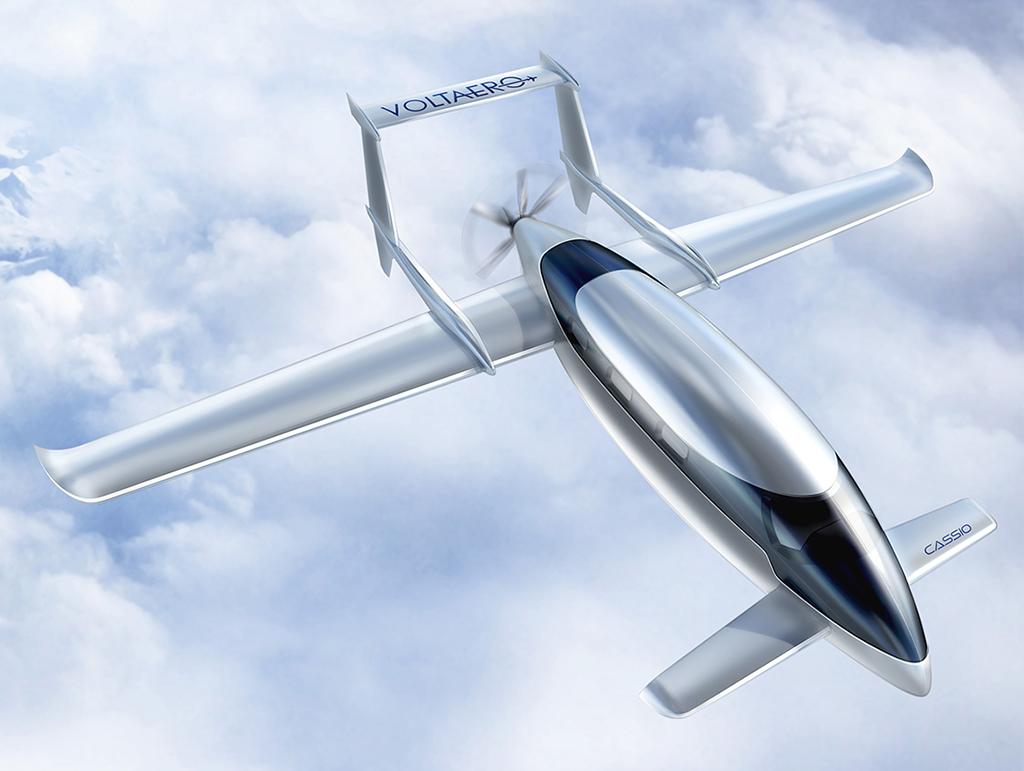
Ampaire Electric EEL
Ampaire has converted the Cessna 337 Skymaster to hybrid-electric propulsion and plans to fly the aircraft on Maui this year, without passengers, on routes flown by Hawaiian regional Mokulele Airlines. A 200-kW electric motor replaces the rear piston engine, with batteries in the cargo pannier.

Bye eFlyer 2
eFlyer 2

Cranfield Project Fresson
Cranfield Aerospace Solutions is leading a UK government-supported project to convert the Fresson nine-passenger Britten-Norman Islander to hybrid-electric propulsion. Begun in October 2019, it aims to fly a demonstrator within 30 months and achieve certification within another 6-12 months.

DLR/MTU Do 228 Electric Flight Demonstrator
MTU Aero Engines and German aerospace center DLR are to develop and test a hydrogen fuel-cell propulsion system in a Dornier 228 flight demonstrator, with a first flight planned for 2026. The complete 500-kW drive train will replace the turboprop engine on one side of the aircraft.

Eviation Alice
Israeli startup Eviation plans to fly a prototype of its nine-passenger electric regional aircraft early in 2021. Powered by three 280-kW MagniX Magni2650 electric motors driving pusher propellers on the wingtips and tail, the battery-powered aircraft is designed to cruise at 240 kt. for 540 nm.

Harbour Air/MagniX eBeaver
In December 2019, British Columbia-based seaplane operator Harbour Air flew a six-passenger de Havilland Canada DHC-2 Beaver floatplane with a 560-kW MagniX Magni500 electric motor replacing its Pratt & Whitney radial engine. Certification of the eBeaver is planned for 2022.

MagniX/AeroTech eCaravan
In May 2020 at Moses Lake, Washington, electric-motor developer MagniX and partner AeroTEC flew a nine-passenger Cessna 208B Grand Caravan with a 560-kW Magni500 motor replacing the Pratt & Whitney Canada PT6A turboprop. Certification of the eCaravan is planned for 2022.

Pipistrel Velis Electro
In June 2020 Slovenia’s Pipistrel received the first internationally recognized type certificate for an electric aircraft when its Velis Electro two-seat trainer aircraft and its Pipistrel-developed electric engine both won European Union Aviation Safety Agency approval.

NASA X-57 Maxwell
NASA is developing the X-57 to demonstrate a five-fold reduction in energy consumption using distributed electric propulsion. In its final form, X-plane will have a smaller, lower-drag high-aspect-ratio wing, with two cruise motors on the tips and 12 high-lift propellers on the leading edge.

Universal Hydrogen Dash 8
U.S. startup Universal Hydrogen is developing a hydrogen fuel-cell propulsion conversion for the de Havilland Canada Dash 8-300 regional turboprop to kick-start demand for its hydrogen modules. MagniX will supply the 2-megawatt electric drive and Plug Power the fuel-cell system. Service entry is planned by 2024.

VoltAero Cassio 330
French startup VoltAero is developing the Cassio family of hybrid-electric aircraft. The Cassio 1 testbed, a modified Cessna 337, is in flight-testing. Initial deliveries of the four-seat Cassio 330, first in the family, are targeted for the end of 2022. Six- and 10-seat versions are to follow.

ZeroAvia ZA250
Hydrogen-electric power-train developer ZeroAvia conducted the first flight of its six-seat Piper 350 testbed on fuel-cell power at Cranfield, England, in September 2020. A 250-300-mi. flight from Orkney in Scotland is planned by year-end under a government-supported project.
Projects to demonstrate the viability of electric propulsion have gathered momentum over the last several months.
